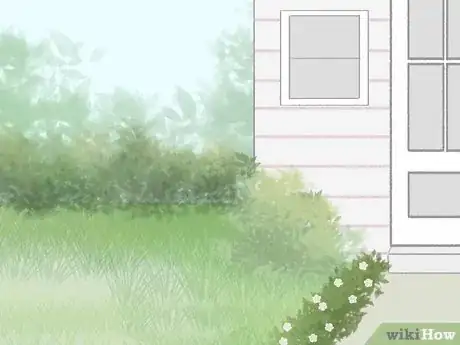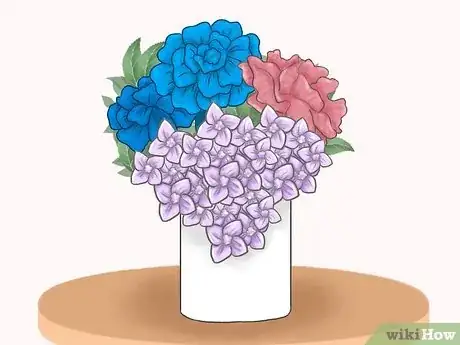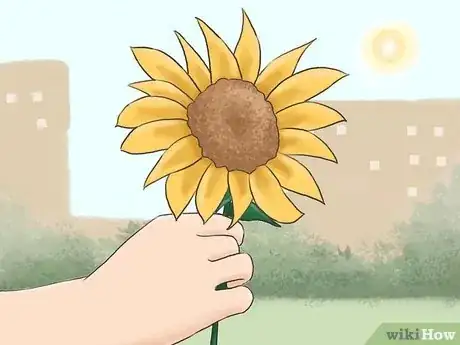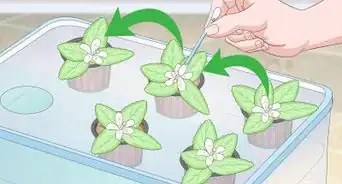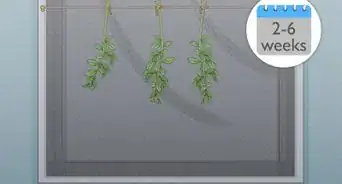X
This article was co-authored by Lauren Kurtz. Lauren Kurtz is a Naturalist and Horticultural Specialist. Lauren has worked for Aurora, Colorado managing the Water-Wise Garden at Aurora Municipal Center for the Water Conservation Department. She earned a BA in Environmental and Sustainability Studies from Western Michigan University in 2014.
This article has been viewed 46,404 times.
A memory or memorial garden can be a thoughtful tribute to someone who has passed away. It can serve as a quiet, reflective place where you can go to be comforted and inspired. A memory garden can enrich your life by allowing you to have somewhere to feel at peace as you remember your loved one's life.
Steps
Part 1
Part 1 of 3:
Choosing Your Land
-
1Plan your memory garden depending upon available space. Use a place connected to your memory of your loved one, if possible. A corner of your deck or patio could serve as a small memory garden if you don't have a lot of space. Consider how much privacy you would like to have and select a location that fulfills these needs.
- The commemorative garden can be large or small, depending upon the size of your yard or designated space and the amount of work you want to put into it.
-
2Select a spot that is visible from your home. Place the garden where it can be seen from a window or covered porch, if such space is available. That way, you can enjoy the view of it even during bad weather.[1]
- If you are fortunate to have a decent view of mountains, a beach, or a river, think about locating your memory garden there.
Advertisement -
3Create boundaries for your space. Set boundary markers for the garden, such as a ring of small stones or a fence. You can even use personal items of the loved one, such as hiking poles, to denote boundaries. This will make the garden feel more secluded and special.
Advertisement
Part 2
Part 2 of 3:
Decorating the Space
-
1Decide on an ideal atmosphere for your garden. Add a soothing water feature and wind chimes to your memorial garden for an even more relaxing atmosphere. Set up outdoor speakers if you would like to listen to music while you are in your garden.[2]
-
2Select colors for your garden. If you want a quiet place where you can meditate or find peace, use soft colors, such as light blues, yellows, and pinks. You might instead want your memory garden to be a place of inspiration and hope, incorporating brighter colors, such as red and orange, and adding playful statuary.
-
3Encourage wildlife to visit. Provide bird or squirrel feeders or birdbaths to enhance the flora and fauna. If you hope to attract butterflies, set up sugar water and fruit while you’re in the garden.
-
4Provide a place to sit. Whether you want to invite others into your garden, or simply want to spend time there alone, use chairs or benches to increase comfort and allow for moments of reflection. Seating will invite people to stay awhile.
-
5Personalize the garden to honor someone's memory. Dedicate your garden to your loved one by considering their personality traits, special interests, and accomplishments, using these to inspire decorations. Add statuary and features that represent your loved one's interests.
- Use a statue of a dog, for instance, to honor a dog lover or a passed dog. Use stepping stones with paw prints and perhaps include a water source that dogs would be able to drink from.
- A small putting green could be used as a memorial garden for an avid golfer. Use dwarf mondo grass to represent a green and make a pea gravel sand trap.
-
6Incorporate personal effects into the garden. To make the space symbolic, you can inscribe your loved one's favorite quote on a stone or plaque. Either a photograph sealed in a weather-proofed frame or an original piece of art could also be meaningful additions to your memory garden.
Advertisement
Part 3
Part 3 of 3:
Making Nature Symbolic
-
1Plant your loved one's favorite flowers. If you do not know their favorite plant, use flowers that bloom in the person's favorite colors. You can also choose to plant flowers that have symbolic meanings, such as forget-me-nots for 'memory' and lilies for 'purity.'
- Use delicate flowers in a small memory garden for a baby or child. Daisies represent innocence, so plant those if you want your garden to be symbolic.
- Honor a veteran by planting flowers in patriotic colors around a commemorative plaque or stone.
-
2Consider using seasonal plants. If your loved one enjoyed a certain season of the year more than the others, plant flowers or trees that bloom during that time of year. Plant tulip bulbs and a spring-flowering shrub if the person loved springtime, for instance.[3]
-
3Choose plants based on location. Be sure that the location you choose will support the types of plants you want to grow. Sun-loving plants need 6-8 hours of sun per day, while shade-lovers need protection from the sun. Research to learn which types of plants grow best in your climate.
Advertisement
References
About This Article
Advertisement
